 Hello, gentle readers, and welcome to the RPG Reload, the semi-weekly feature where we have trouble figuring out where it all starts and ends at times. Each week, we take a look at an RPG from the App Store’s past to see how it’s holding up with some time behind it. We revisit old favorites, reflect on their position in the overall library, or sometimes just take a deeper dive than our reviews typically allow for. As the keeper of the flame, I try to plan a balanced schedule from week to week, but if you think I’m missing something important, don’t hesitate! You can give me suggestions by commenting below, posting in the Official RPG Reload Club thread, or by tweeting me at @RPGReload. You might not see your suggestion soon, but it will be added to the master list for future consideration.
Hello, gentle readers, and welcome to the RPG Reload, the semi-weekly feature where we have trouble figuring out where it all starts and ends at times. Each week, we take a look at an RPG from the App Store’s past to see how it’s holding up with some time behind it. We revisit old favorites, reflect on their position in the overall library, or sometimes just take a deeper dive than our reviews typically allow for. As the keeper of the flame, I try to plan a balanced schedule from week to week, but if you think I’m missing something important, don’t hesitate! You can give me suggestions by commenting below, posting in the Official RPG Reload Club thread, or by tweeting me at @RPGReload. You might not see your suggestion soon, but it will be added to the master list for future consideration.

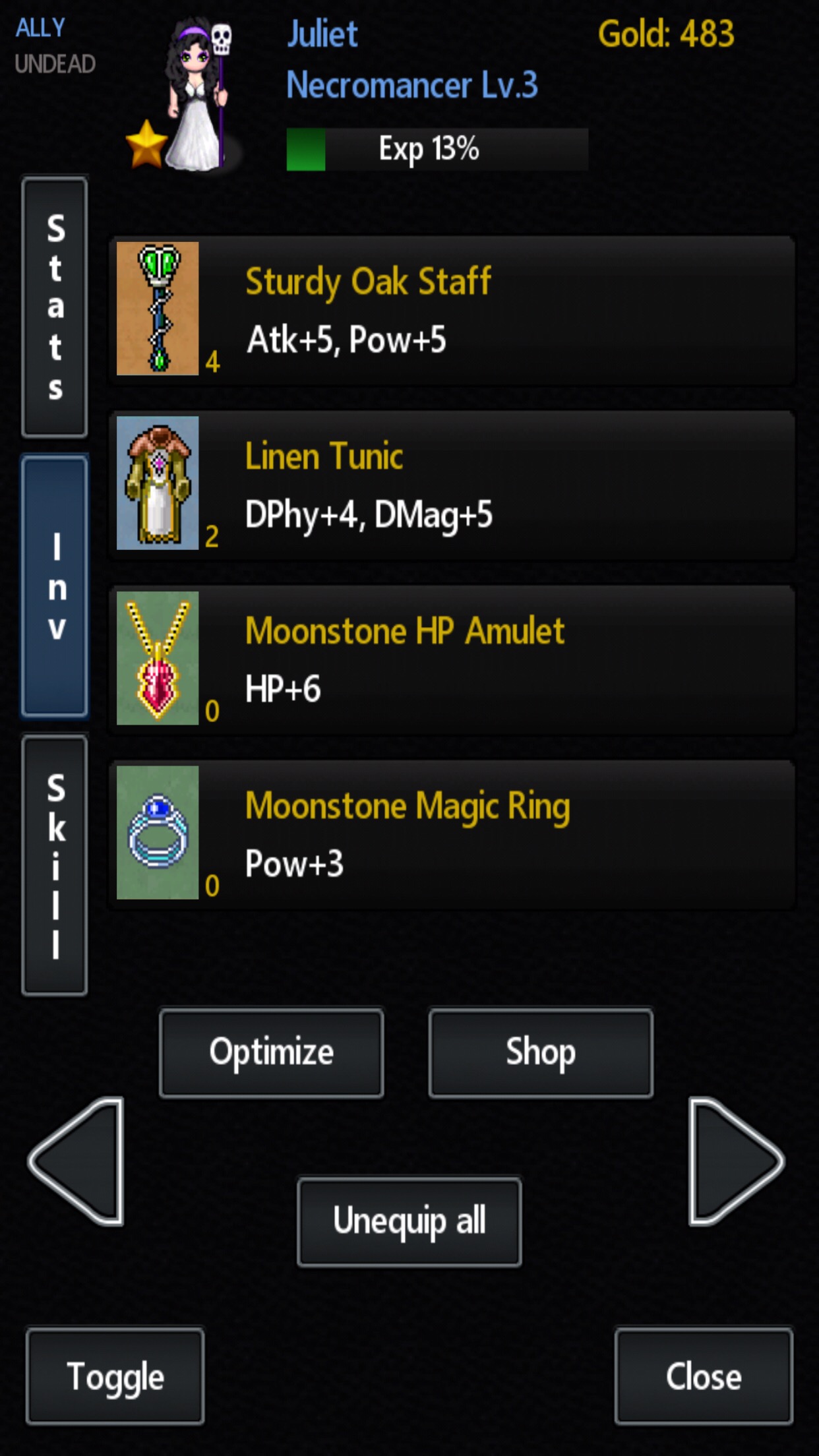
Like any platform, iOS has its share of strong and weak points in its library. I hope that over the course of nearly 100 RPG Reload File articles, I’ve demonstrated that the platform has a lot of great RPGs. I feel like it’s one of the few genres on iOS that can still get away with sticking a relatively high price tag, and that points to a fairly large following of hardcore players. One of the other genres that appears to get by with reasonable success is the strategy genre. It often overlaps with the RPG category, so it’s no surprise that its fans are similarly dedicated. Of course, just as is the case on any platform, a lot of great games don’t meet with quite as much success as they probably deserve, even with an established customer base. Now, I don’t know how well or badly Kingturn did as a series. It obviously did well enough to merit a few follow-ups, and it was certainly popular among TouchArcade readers. But given developer Mangobile has been pretty quiet for the last couple of years following the releases of Kingturn‘s spiritual successor Tactics Maiden (Free) and the quirky physics-puzzler Earth vs Balloons (Free), I suspect the games didn’t make enough money to buy any phat palatial estates. Which, to be fair, few games do.
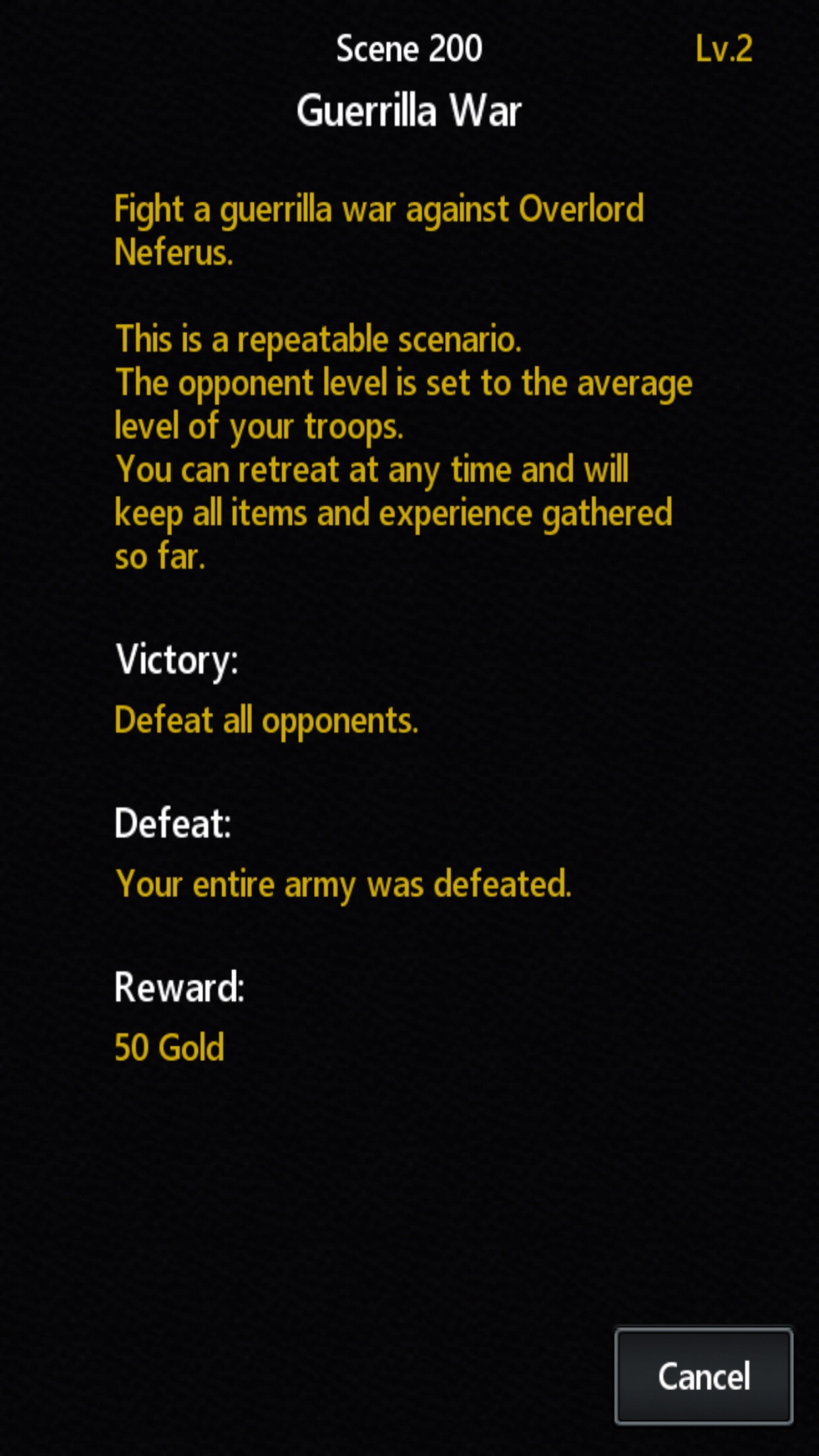 It’s a shame, though, because if any games deserve to have the developers doing the backstroke in a swimming pool full of cash, it’s the Kingturn trilogy. While the visuals leave something to be desired, in nearly every other regard these are among the best strategy RPGs of any platform. They pack in massive mission counts for a low price, offer computer opponents who will genuinely challenge you without cheating, and tell a pretty interesting story along the way. Taken as a trilogy, Kingturn offers a huge continuous story with more than 230 scenarios/missions, 60 character classes, and around 100 hours of gameplay. Each game in the series allows you to sample the first several missions for free, with a $4.99 IAP unlocking the rest of the game. That means you can get it all for under $15, which is positively absurd.
It’s a shame, though, because if any games deserve to have the developers doing the backstroke in a swimming pool full of cash, it’s the Kingturn trilogy. While the visuals leave something to be desired, in nearly every other regard these are among the best strategy RPGs of any platform. They pack in massive mission counts for a low price, offer computer opponents who will genuinely challenge you without cheating, and tell a pretty interesting story along the way. Taken as a trilogy, Kingturn offers a huge continuous story with more than 230 scenarios/missions, 60 character classes, and around 100 hours of gameplay. Each game in the series allows you to sample the first several missions for free, with a $4.99 IAP unlocking the rest of the game. That means you can get it all for under $15, which is positively absurd.
While Kingturn Underworld (Free) is the latest release in the series, it’s the first game chronologically in the story. This series has a somewhat complicated history that I’ve already recounted in my original review of Kingturn Underworld and my RPG Reload of Kingturn RPG, so I’m not going to go over it in detail here. Basically, by the time the developer got to the third game in the series, he decided he wanted to have the first two games done in the same engine with all of the latest improvements. Kingturn RPG (Free) was that third game, while Kingturn Plus (Free) and Kingturn Underworld are remakes of the original Swords & Earrings and its prequel Knighturn respectively. So, once again, if you’re looking to play the story in the correct chronological order, you’ll want to start with Kingturn Underworld, move on to Kingturn RPG, and finish up with Kingturn Plus. Phew!
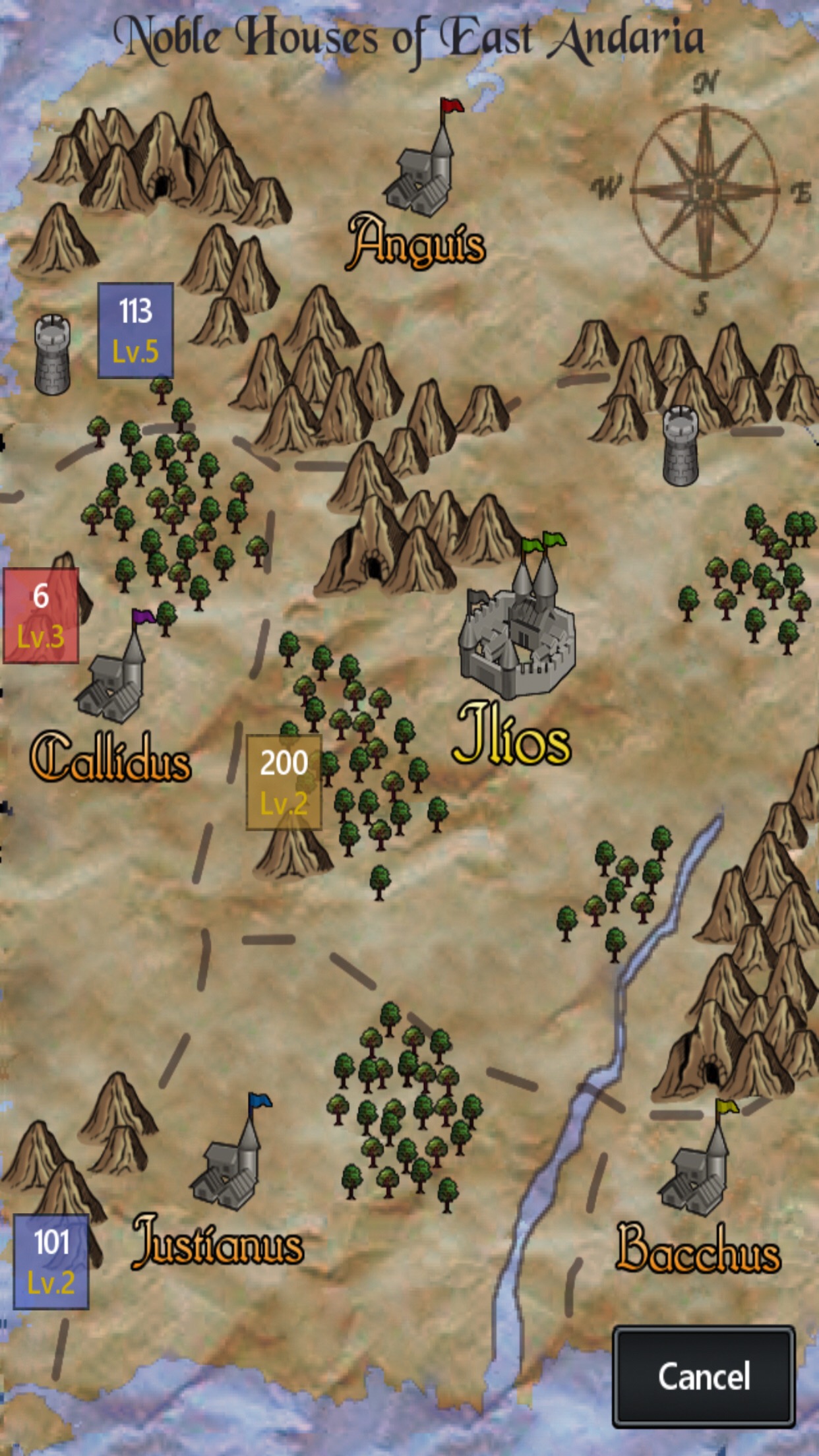 That means you should be starting your Kingturn journey with the subject of this week’s article. Kingturn Underworld covers the rise of King Constantin, the main figure around which the series revolves. You’ll follow Juliet, a denizen of the Underworld and daughter of Overlord Xanthus. An unexpected rebellion rocks the Underworld one day, and Juliet and her comrades have to flee to the surface and try to make a plan to retake control. In this game, you’ll be playing as characters who would usually be the bad guys in most other games. Your soldiers and fighters are almost all monsters of various types, which makes it perfect to play as a Halloween game. With a roster including creatures like vampires, giant bats, and skeletons, the special moves have a distinct flavor from the other Kingturn games. You’ll be draining life from enemies, raising the dead, and summoning zombies to fight for you.
That means you should be starting your Kingturn journey with the subject of this week’s article. Kingturn Underworld covers the rise of King Constantin, the main figure around which the series revolves. You’ll follow Juliet, a denizen of the Underworld and daughter of Overlord Xanthus. An unexpected rebellion rocks the Underworld one day, and Juliet and her comrades have to flee to the surface and try to make a plan to retake control. In this game, you’ll be playing as characters who would usually be the bad guys in most other games. Your soldiers and fighters are almost all monsters of various types, which makes it perfect to play as a Halloween game. With a roster including creatures like vampires, giant bats, and skeletons, the special moves have a distinct flavor from the other Kingturn games. You’ll be draining life from enemies, raising the dead, and summoning zombies to fight for you.
At its core, however, it’s not terribly different from the other Kingturn games. You’ll slowly amass an army of warriors, fight in turn-based battles, pick up new gear to power up your team, and level your squad into a group of ferocious fiends. Each scenario plays out on a different map, and you’ll get little story bits in between to tie everything together. Between maps, you’ll be able to manage your group. You can train them to top them off to their next levels, equip them with new gear, hire mercenaries, and so on. As you play, you’ll befriend new characters with new job classes, allowing to slowly diversify your roster over the course of the story. In this respect, the Kingturn games aren’t anything special. RPG elements have been grafted into strategy games since virtually the beginning of both genres, after all.
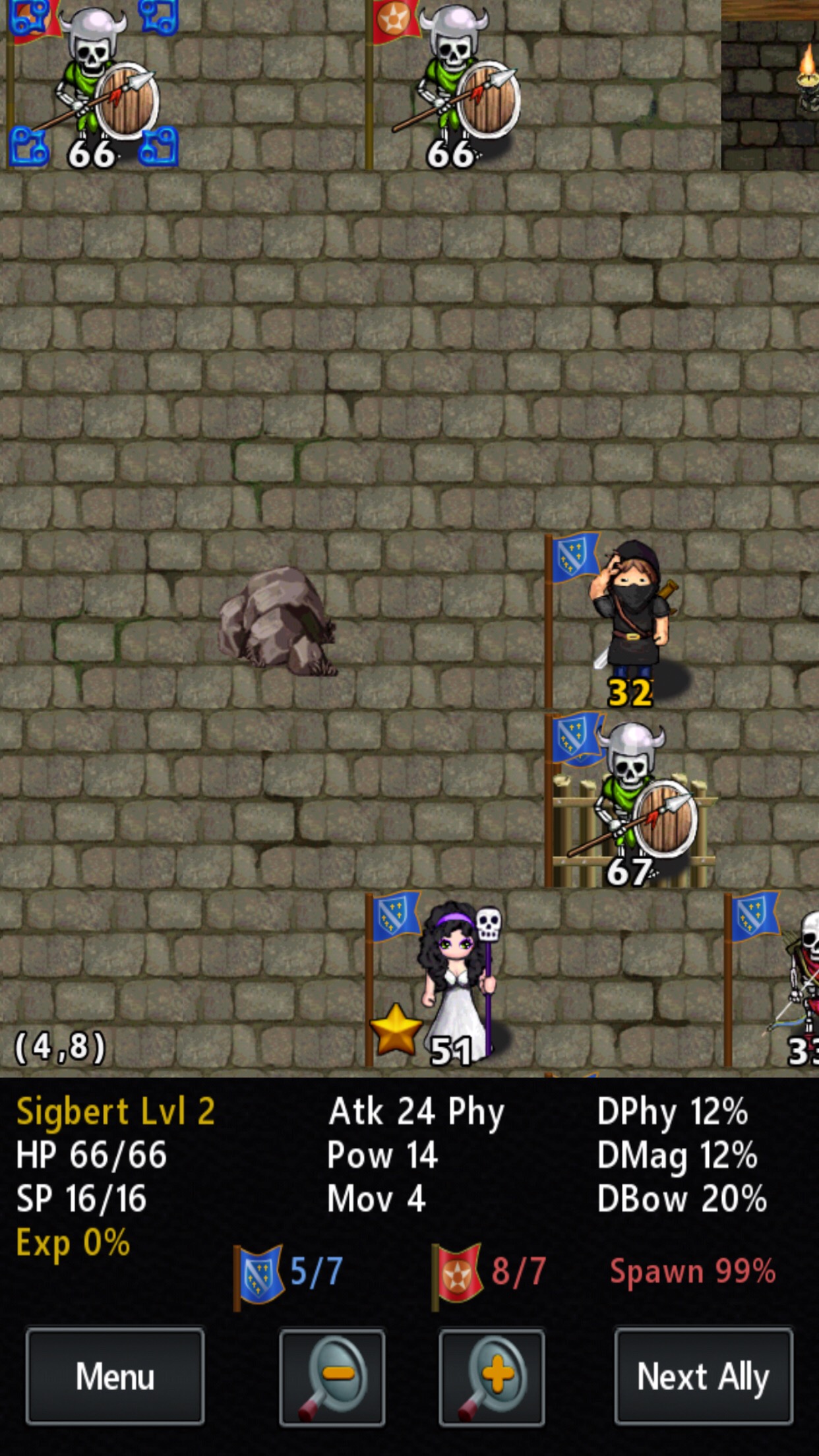 Perhaps fittingly, the Kingturn games blaze their trails on the battlefields. When I think about why I love these games, two main points come to mind. The first, and most important, is the enemy AI. Most strategy RPGs feature an opponent that can be herded to an almost embarrassing degree. Their routines are basically simple, so it’s just a matter of figuring out how to sucker them. Maybe the AI prioritizes hitting mages. Maybe it just comes down to moving a piece into the AI’s attack range. Once you learn how to lure the AI, many strategy RPGs become a matter of preparation, numbers, and not making any stupid mistakes. The Kingturn games are a little more complicated than that. There are multiple difficulty settings, and even on the lower ones, you might have trouble getting your opponent to do what you want them to. On the higher difficulty settings, you’d best make plans that pull out every stop, because the AI isn’t going to do a thing to help you.
Perhaps fittingly, the Kingturn games blaze their trails on the battlefields. When I think about why I love these games, two main points come to mind. The first, and most important, is the enemy AI. Most strategy RPGs feature an opponent that can be herded to an almost embarrassing degree. Their routines are basically simple, so it’s just a matter of figuring out how to sucker them. Maybe the AI prioritizes hitting mages. Maybe it just comes down to moving a piece into the AI’s attack range. Once you learn how to lure the AI, many strategy RPGs become a matter of preparation, numbers, and not making any stupid mistakes. The Kingturn games are a little more complicated than that. There are multiple difficulty settings, and even on the lower ones, you might have trouble getting your opponent to do what you want them to. On the higher difficulty settings, you’d best make plans that pull out every stop, because the AI isn’t going to do a thing to help you.
The other thing that comes to mind is perhaps the Kingturn series’s defining element. In most strategy RPGs, beating a map typically involves wiping out all of the enemies, or perhaps taking control of a base. Perhaps some reinforcements will show up during the battle, but at least in the RPG strain of the genre, things are usually set up in advance. You find an advantageous position, pull the enemies in, and wipe them out. It’s usually a good idea to gang up on enemies, as there’s no real incentive to merely wounding them. We’ve seen a few games break away from this, most notably the recent Banner Saga games, but for the most part, the genre tends to follow this pattern. It’s here where Kingturn summons inspiration from an important Nintendo strategy franchise developed by Intelligent Systems. No, not Fire Emblem. Rather, it pulls from Advance Wars, an apparently defunct series of military strategy games that has proven to be a hot source of ideas for iOS developers in 2016.
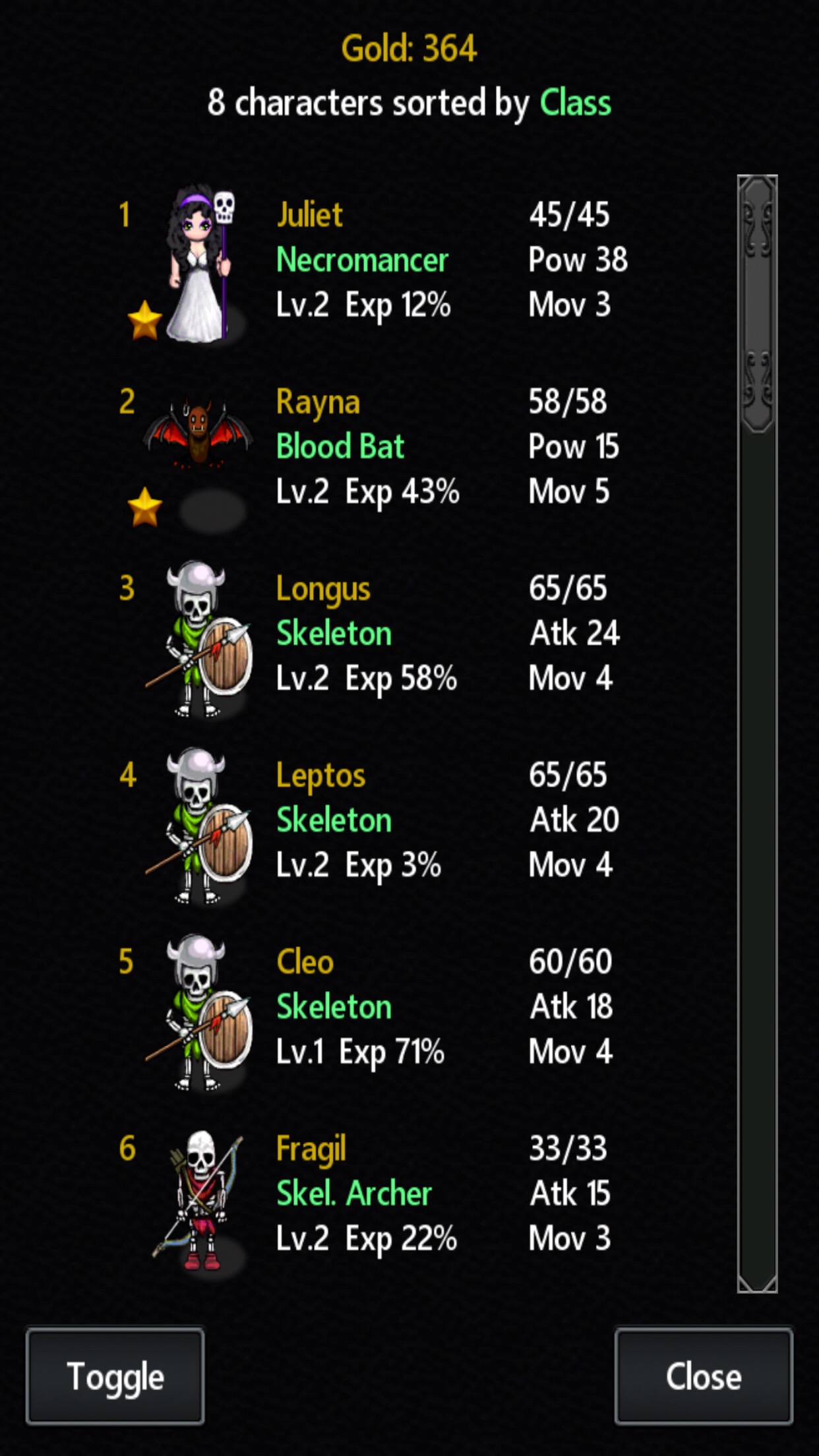 While the Advance Wars games don’t have RPG elements, a core part of the strategy on each map is in managing resources. You theoretically have as many units as you need, making individual units expendable. The catch is that you can only replace lost units if you have the resources to do so. Those resources are replenished each turn based on control of certain areas of the map, which makes each mission more about a series of mini-battles rather than an over-arching one. It’s this aspect that Kingturn draws heavily from, albeit in a heavily modified fashion. Kingturn wants to have those resource management and map control aspects, but without losing the named units and continuous map-to-map progression of Fire Emblem.
While the Advance Wars games don’t have RPG elements, a core part of the strategy on each map is in managing resources. You theoretically have as many units as you need, making individual units expendable. The catch is that you can only replace lost units if you have the resources to do so. Those resources are replenished each turn based on control of certain areas of the map, which makes each mission more about a series of mini-battles rather than an over-arching one. It’s this aspect that Kingturn draws heavily from, albeit in a heavily modified fashion. Kingturn wants to have those resource management and map control aspects, but without losing the named units and continuous map-to-map progression of Fire Emblem.
Unless you choose to use perma-death (yes, it’s in here for the masochists), any character who falls in battle will be able to return in five turns, provided he or she has an entry point onto the battlefield. Those entry points are the barracks, and winning or losing a map typically involves one side occupying all of the barracks of the other side. Until you do that, the enemy will be able to cycle their fallen units back into the fight, just the same as you. Then, there are the palisades. These are the real keys to winning each battle. In each battle, regardless of the number of healthy units you have, you can only field a set amount of troops at once. On any but the lowest difficulty setting, you usually start each map at a disadvantage to the enemy in this regard. For every palisade you take control of, however, you can field one additional unit while also depriving the enemy of one of theirs. Thus, your goal on most maps is going to be to slowly work your way from your barracks to a series of palisades, widening your advantage over the enemy forces as you go.
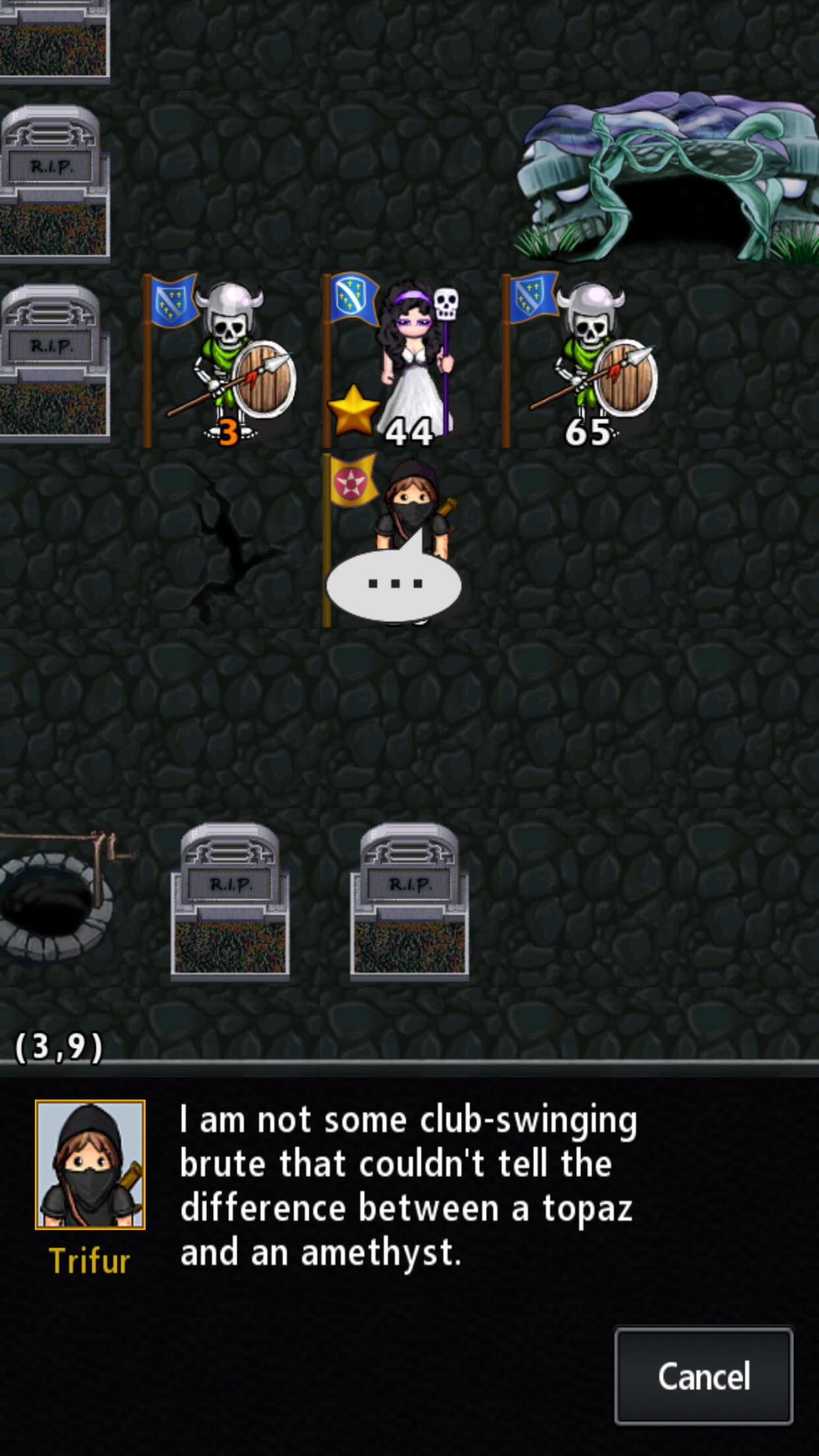 For its part, the enemy will rarely give up these spots on the map without a serious fight. It’s possible to lure them away, but they’re usually smart enough to have a unit sitting on any palisade or barracks within your reach. To take one of these squares, you’ll usually have to kill the enemy guard and be able to park a relatively healthy unit on the space in the span of a single turn. Between the respawning rules, the way palisades work, and the intelligence of the enemy, Kingturn requires a lot of careful thought if you want to win. Going in guns-blazing and mopping up a bunch of enemies might feel awesome, but if you’re not in a position to capitalize that by seizing resources, it’s going to feel pretty bad when those foes all respawn at once, fully healed and ready to cause you a new headache. Sometimes it’s useful to gang up on an enemy to kill them, but more often than not, you’ll want to wound and debuff them until you have your pieces in position for a big grab. Battles are a real struggle in this game, and I love it all the more for it.
For its part, the enemy will rarely give up these spots on the map without a serious fight. It’s possible to lure them away, but they’re usually smart enough to have a unit sitting on any palisade or barracks within your reach. To take one of these squares, you’ll usually have to kill the enemy guard and be able to park a relatively healthy unit on the space in the span of a single turn. Between the respawning rules, the way palisades work, and the intelligence of the enemy, Kingturn requires a lot of careful thought if you want to win. Going in guns-blazing and mopping up a bunch of enemies might feel awesome, but if you’re not in a position to capitalize that by seizing resources, it’s going to feel pretty bad when those foes all respawn at once, fully healed and ready to cause you a new headache. Sometimes it’s useful to gang up on an enemy to kill them, but more often than not, you’ll want to wound and debuff them until you have your pieces in position for a big grab. Battles are a real struggle in this game, and I love it all the more for it.
As with the other Kingturn games, Kingturn Underworld got a nice update early in 2015 to bring it in line with the standards of Tactics Maiden. That was its first update since its release in 2013, and it added higher resolution graphics and fonts, some UI improvements, the ability to tap on enemies to see their attack and movement range, and a few other things. While Mangobile has been quiet on new releases, they’re still very much around, so I doubt we have to worry too much about these games for the foreseeable future. These are some of my favorite strategy games on iOS, so I’m happy they have such a dedicated developer behind them. They’re a bit long to replay too often, but I certainly enjoy taking a crack at them every once in a while.

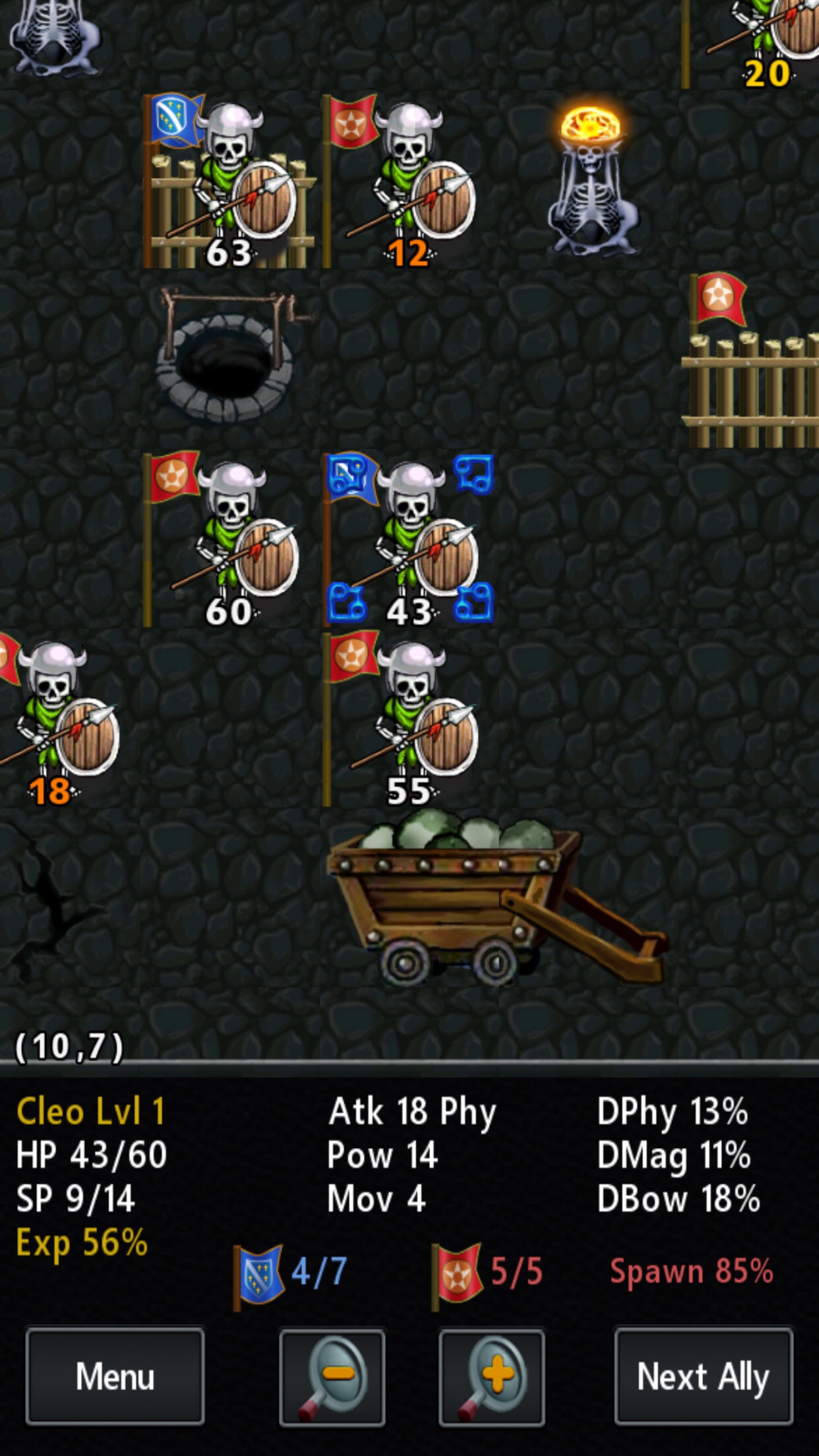
That’s just my take on Kingturn Underworld, though. What do you all think? I want to know, so be sure to leave your comments below, post in the Official RPG Reload Club thread, or tweet me at @RPGReload. We’ll be recording the RPG Reload Podcast for this month quite soon, so if you have any questions you want us to answer, be sure to send those to [email protected]. As for me, I’ll be back next week with an interview with another developer. Thanks for reading!
Next Week’s Reload: Interview time!